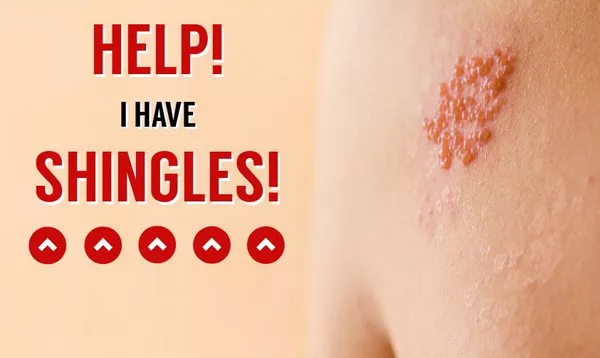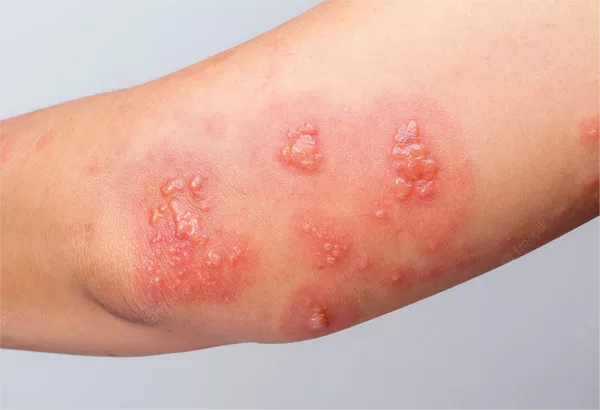Shingles, also known as herpes zoster, is a viral infection characterized by a painful rash. It is caused by the reactivation of the varicella-zoster virus (VZV), the same virus responsible for chickenpox. Understanding how adults catch shingles involves exploring the lifecycle of the virus, the factors leading to its reactivation, and the mechanisms of transmission.
The Lifecycle of the Varicella-Zoster Virus
The varicella-zoster virus has a unique lifecycle that plays a crucial role in the development of shingles. After an individual contracts chickenpox, usually in childhood, the virus does not entirely leave the body. Instead, it remains dormant in the dorsal root ganglia, clusters of nerve cells near the spinal cord. The immune system keeps the virus in check, preventing it from causing symptoms.
However, under certain conditions, the virus can reactivate, traveling along nerve pathways to the skin, leading to shingles. The exact triggers for reactivation are not entirely understood, but several factors can increase the risk.
Risk Factors for Shingles Reactivation
1. Age: The risk of developing shingles increases with age, particularly in individuals over 50. This is partly due to the natural decline in immune function as one ages, making it harder for the body to keep the virus dormant.
2. Weakened Immune System: Conditions that compromise the immune system, such as HIV/AIDS, cancer, or autoimmune diseases, can increase the likelihood of shingles. Treatments like chemotherapy, radiation, and immunosuppressive drugs also heighten the risk.
3. Stress: High levels of stress can weaken the immune system, potentially triggering the reactivation of the varicella-zoster virus.
4. Physical Trauma: Injuries or surgical procedures affecting the nervous system can sometimes provoke the virus to reactivate.
5. Certain Medications: Long-term use of steroids or other medications that suppress the immune system can increase the risk of shingles.
Mechanisms of Shingles Transmission
Unlike chickenpox, shingles is not directly contagious in the same way. An individual with shingles cannot spread shingles to another person. However, they can transmit the varicella-zoster virus to someone who has never had chickenpox or been vaccinated against it. In such cases, the exposed individual would develop chickenpox, not shingles.
The transmission occurs through direct contact with the fluid from the shingles rash blisters. It is less common for the virus to spread through airborne transmission, but it can happen, especially if the blisters are open and oozing. Once the blisters crust over, the risk of transmission significantly decreases.
Symptoms and Diagnosis of Shingles
Shingles typically starts with a tingling or burning sensation in a specific area of the body, often on one side of the torso. This is followed by the appearance of a red rash that develops into fluid-filled blisters. Other symptoms may include fever, headache, and fatigue. The pain associated with shingles can be intense and is often described as sharp, stabbing, or throbbing.
Diagnosis is usually based on the distinctive rash and the patient’s medical history. In some cases, laboratory tests may be used to confirm the presence of the varicella-zoster virus.
Complications of Shingles
While shingles can be very painful and uncomfortable, it is not typically life-threatening. However, it can lead to serious complications, particularly in older adults or those with weakened immune systems.
1. Postherpetic Neuralgia (PHN): This is the most common complication of shingles, characterized by severe pain that persists even after the rash has healed. PHN can last for months or even years and significantly impact the quality of life.
2. Vision Loss: If shingles affects the eye, it can lead to infections that may result in vision loss.
3. Neurological Problems: Shingles can cause inflammation of the brain (encephalitis), facial paralysis, or hearing problems.
4. Skin Infections: The rash can become infected with bacteria, leading to additional complications.
Prevention of Shingles
Preventing shingles primarily involves vaccination. The Centers for Disease Control and Prevention (CDC) recommends the shingles vaccine for adults aged 50 and older. There are two vaccines available: Zostavax and Shingrix.
1. Zostavax: This is a live attenuated vaccine that has been shown to reduce the risk of shingles by about 51% and the risk of PHN by 67%. It is given as a single injection.
2. Shingrix: This is a newer, non-live vaccine that is more effective, reducing the risk of shingles by over 90%. It is given in two doses, two to six months apart. Shingrix is recommended even for those who have previously received Zostavax or had shingles.
SEE ALSO: What is the Dosage of Valtrex for Shingles?
Treatment of Shingles
Treatment for shingles focuses on reducing symptoms and preventing complications. Antiviral medications such as acyclovir, valacyclovir, and famciclovir can help shorten the duration of the illness if taken early. Pain management is also crucial and may involve over-the-counter pain relievers, prescription medications, or topical creams.
Home Care and Support
In addition to medical treatment, self-care measures can help manage shingles symptoms:
- Keep the Rash Clean and Dry: This helps prevent secondary bacterial infections.
- Cool Compresses: Applying cool, wet compresses to the rash can help reduce pain and itching.
- Loose Clothing: Wearing loose-fitting clothing can minimize irritation of the rash.
- Rest and Stress Management: Adequate rest and stress management techniques can support the immune system during recovery.
Conclusion
Understanding how adults catch shingles involves recognizing the role of the varicella-zoster virus, the factors that can lead to its reactivation, and the methods of transmission. While shingles itself is not contagious, the virus can spread to those who have not had chickenpox, leading to new cases of chickenpox. Prevention through vaccination, early treatment, and proper self-care are crucial in managing and reducing the impact of shingles. By staying informed and proactive, individuals can better protect themselves and others from this painful and potentially debilitating condition.
Related Topics:



























